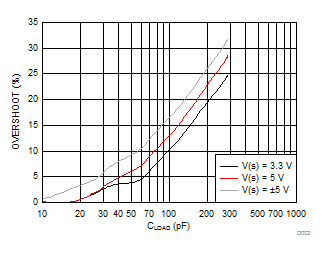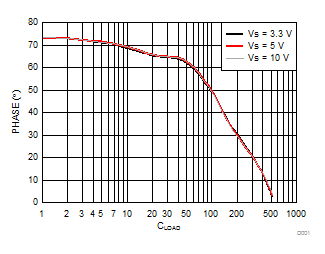-
LMV84x CMOS入力、RRIO、低消費電力、広い電源電圧範囲の4.5MHzオペアンプ
- 1 特長
- 2 アプリケーション
- 3 概要
- 4 改訂履歴
- 5 Pin Configuration and Functions
- 6 Specifications
- 7 Detailed Description
- 8 Application and Implementation
- 9 Power Supply Recommendations
- 10Layout
- 11デバイスおよびドキュメントのサポート
- 12メカニカル、パッケージ、および注文情報
- 重要なお知らせ
LMV84x CMOS入力、RRIO、低消費電力、広い電源電圧範囲の4.5MHzオペアンプ
1 特長
2 アプリケーション
- 高インピーダンスのセンサ・インターフェイス
- バッテリ駆動の計測機器
- 高ゲインおよび計装用のアンプ
- DACバッファおよびアクティブ・フィルタ
3 概要
LMV84xデバイスは、低電圧で低消費電力のオペアンプで、2.7V~12Vの範囲の電源電圧で動作し、レール・ツー・レールの入出力機能を持ちます。オフセット電圧と消費電流が低く、CMOS入力であるため、高インピーダンスのセンサ・インターフェイスやバッテリ駆動のアプリケーションに理想的です。
シングルのLMV841は、省スペースの5ピンSC70パッケージで、デュアルのLMV842は8ピンのVSSOPおよび8ピンのSOICパッケージで、クワッドのLMV844は14ピンのTSSOPおよび14ピンのSOICパッケージで供給されます。これらの小型パッケージは、面積が制限されるPCBや携帯電子機器に理想的なソリューションです。
製品情報(1)
| 型番 | パッケージ | 本体サイズ(公称) |
|---|---|---|
| LMV841 | SC70 (5) | 2.00mm×1.25mm |
| LMV842 | VSSOP (8) | 3.00mm×3.00mm |
| SOIC (8) | 4.90mm×3.91mm | |
| LMV844 | SOIC (14) | 8.65mm×3.91mm |
| TSSOP (14) | 5.00mm×4.40mm |
- 提供されているすべてのパッケージについては、データシートの末尾にある注文情報を参照してください。
代表的なアプリケーション
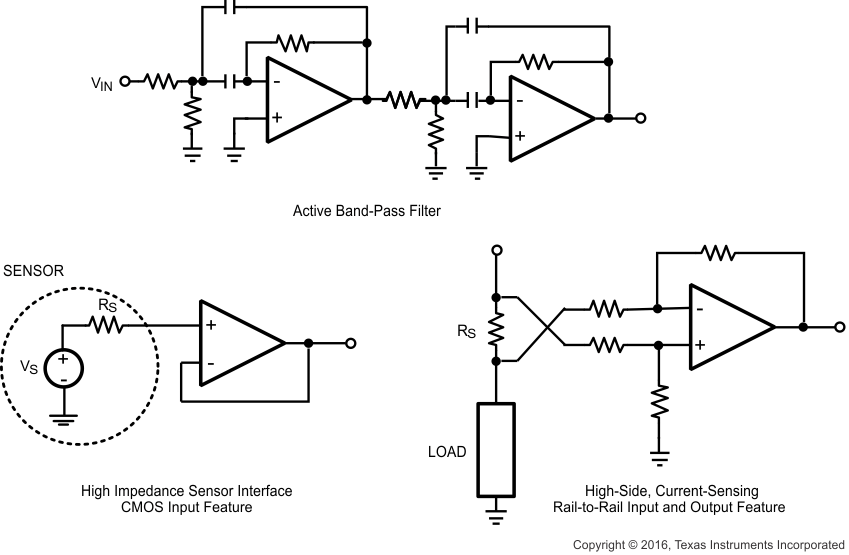
4 改訂履歴
Changes from H Revision (July 2016) to I Revision
- Changed ESD Ratings table footnotes to TI standard Go
- Changed Thermal Information tableGo
- Changed Phase Margin vs CL graphic Go
- Changed Overshoot vs CL graphicGo
Changes from G Revision (February 2013) to H Revision
- 「ESD定格」の表、「機能説明」セクション、「デバイスの機能モード」セクション、「アプリケーションと実装」セクション、「電源に関する推奨事項」セクション、「レイアウト」セクション、「デバイスおよびドキュメントのサポート」セクション、「メカニカル、パッケージ、および注文情報」セクションを追加Go
Changes from F Revision (February 2013) to G Revision
- Changed layout of National Semiconductor Data Sheet to TI formatGo
5 Pin Configuration and Functions
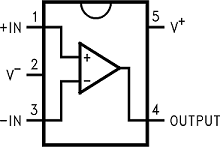
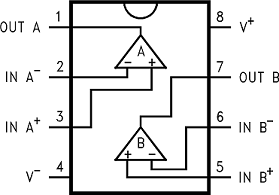
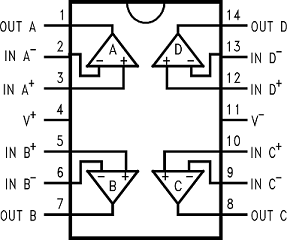
Pin Functions
| PIN | DESCRIPTION | |
|---|---|---|
| NAME | I/O. | |
| +IN | I | Noninverting Input |
| –IN | I | Inverting Input |
| OUT | O | Output |
| V+ | P | Positive Supply |
| V– | P | Negative Supply |
6 Specifications
6.1 Absolute Maximum Ratings
See (1)(2)| MIN | MAX | UNIT | ||
|---|---|---|---|---|
| VIN differential | –300 | 300 | mV | |
| Supply voltage (V+ – V−) | 13.2 | V | ||
| Voltage at input and output pins | V+ + 0.3 | V− – 0.3 | V | |
| Input current | 10 | mA | ||
| Junction temperature (3) | 150 | °C | ||
| Soldering information | Infrared or convection (20 s) | 235 | °C | |
| Wave soldering lead temperature (10 s) | 260 | °C | ||
| Storage temperature, Tstg | −65 | 150 | °C | |
6.2 ESD Ratings
| VALUE | UNIT | |||
|---|---|---|---|---|
| V(ESD) | Electrostatic discharge | Human-body model (HBM)(1) | ±2000 | V |
| Charged-device model (CDM), per JEDEC specification JESD22-C101(2) | ±250 | |||
6.3 Recommended Operating Conditions
| MIN | MAX | UNIT | |
|---|---|---|---|
| Temperature(1) | −40 | 125 | °C |
| Supply voltage (V+ – V−) | 2.7 | 12 | V |
6.4 Thermal Information
| THERMAL METRIC(1) | LMV84x | UNIT | |||||
|---|---|---|---|---|---|---|---|
| DCK (SC70) | DGK (VSSOP) | D (SOIC) | PW (TSSOP) | ||||
| 5 PINS | 8 PINS | 8 PINS | 14 PIN | 14 PINS | |||
| RθJA | Junction-to-ambient thermal resistance(2) | 269.9 | 179.2 | 121.4 | 85.4 | 113.3 | °C/W |
| RθJC(top) | Junction-to-case (top) thermal resistance | 93.8 | 69.2 | 65.7 | 43.5 | 38.9 | °C/W |
| RθJB | Junction-to-board thermal resistance | 48.8 | 99.7 | 62.0 | 39.8 | 56.3 | °C/W |
| ψJT | Junction-to-top characterization parameter | 2.0 | 10.0 | 16.5 | 9.2 | 3.1 | °C/W |
| ψJB | Junction-to-board characterization parameter | 47.9 | 98.3 | 61.4 | 39.6 | 55.6 | °C/W |
| RθJC(bot) | Junction-to-case (bottom) thermal resistance | N/A | N/A | N/A | N/A | N/A | °C/W |
6.5 Electrical Characteristics – 3.3 V
Unless otherwise specified, all limits are ensured for TA = 25°C, V+ = 3.3 V, V− = 0 V, VCM = V+ / 2, and RL > 10 MΩ to V+ / 2.(1)| PARAMETER | TEST CONDITIONS | MIN(2) | TYP(3) | MAX(2) | UNIT | ||
|---|---|---|---|---|---|---|---|
| VOS | Input offset voltage | –500 | ±50 | 500 | µV | ||
| at the temperature extremes | –800 | 800 | |||||
| TCVOS | Input offset voltage drift (4) | 0.5 | µV/°C | ||||
| at the temperature extremes | –5 | 5 | |||||
| IB | Input bias current (4) (5) | 0.3 | 10 | pA | |||
| at the temperature extremes | 300 | ||||||
| IOS | Input offset current | 40 | fA | ||||
| CMRR | Common-mode rejection ratio LMV841 | 0 V ≤ VCM ≤ 3.3 V | 84 | 112 | dB | ||
| at the temperature extremes | 80 | ||||||
| Common-mode rejection ratio LMV842 and LMV844 | 0 V ≤ VCM ≤ 3.3 V | 77 | 106 | dB | |||
| at the temperature extremes | 75 | ||||||
| PSRR | Power supply rejection ratio | 2.7 V ≤ V+ ≤ 12 V, VO = V+ / 2 | 86 | 108 | dB | ||
| at the temperature extremes | 82 | ||||||
| CMVR | Input common-mode voltage range | CMRR ≥ 50 dB, at the temperature extremes | –0.1 | 3.4 | V | ||
| AVOL | Large signal voltage gain | RL = 2 kΩ VO = 0.3 V to 3 V |
100 | 123 | dB | ||
| at the temperature extremes | 96 | ||||||
| RL = 10 kΩ VO = 0.2 V to 3.1 V |
100 | 131 | dB | ||||
| at the temperature extremes | 96 | ||||||
| VO | Output swing high, (measured from V+) |
RL = 2 kΩ to V+/2 | 52 | 80 | mV | ||
| at the temperature extremes | 120 | ||||||
| RL = 10 kΩ to V+/2 | 28 | 50 | mV | ||||
| at the temperature extremes | 70 | ||||||
| Output swing low, (measured from V−) |
RL = 2 kΩ to V+/2 | 65 | 100 | mV | |||
| at the temperature extremes | 120 | ||||||
| RL = 10 kΩ to V+/2 | 33 | 65 | mV | ||||
| at the temperature extremes | 75 | ||||||
| IO | Output short-circuit current(6)(7) | Sourcing VO = V+/2 VIN = 100 mV |
20 | 32 | mA | ||
| at the temperature extremes | 15 | ||||||
| Sinking VO = V+/2 VIN = −100 mV |
20 | 27 | mA | ||||
| at the temperature extremes | 15 | ||||||
| IS | Supply current | Per channel | 0.93 | 1.5 | mA | ||
| at the temperature extremes | 2 | ||||||
| SR | Slew rate (8) | AV = 1, VO = 2.3 VPP
10% to 90% |
2.5 | V/µs | |||
| GBW | Gain bandwidth product | 4.5 | MHz | ||||
| Φm | Phase margin | 67 | Deg | ||||
| en | Input-referred voltage noise | f = 1 kHz | 20 | nV/ |
|||
| ROUT | Open-loop output impedance | f = 3 MHz | 70 | Ω | |||
| THD+N | Total harmonic distortion + noise | f = 1 kHz , AV = 1 RL = 10 kΩ |
0.005% | ||||
| CIN | Input capacitance | 7 | pF | ||||
6.6 Electrical Characteristics – 5 V
Unless otherwise specified, all limits are ensured for TA = 25°C, V+ = 5 V, V− = 0 V, VCM = V+ / 2, and RL > 10 MΩ to V+ / 2.(1)| PARAMETER | TEST CONDITIONS | MIN(2) | TYP(3) | MAX(2) | UNIT | ||
|---|---|---|---|---|---|---|---|
| VOS | Input offset voltage | –500 | ±50 | 500 | µV | ||
| at the temperature extremes | –800 | 800 | |||||
| TCVOS | Input offset voltage drift(4) | 0.35 | µV/°C | ||||
| at the temperature extremes | –5 | 5 | |||||
| IB | Input bias current(4)(5) | 0.3 | 10 | pA | |||
| at the temperature extremes | 300 | ||||||
| IOS | Input offset current | 40 | fA | ||||
| CMRR | Common-mode rejection ratio LMV841 | 0 V ≤ VCM ≤ 5 V | 86 | 112 | dB | ||
| at the temperature extremes | 80 | ||||||
| Common-mode rejection ratio LMV842 and LMV844 | 0 V ≤ VCM ≤ 5 V | 81 | 106 | dB | |||
| at the temperature extremes | 79 | ||||||
| PSRR | Power supply rejection ratio | 2.7 V ≤ V+ ≤ 12 V, VO = V+/2 | 86 | 108 | dB | ||
| at the temperature extremes | 82 | ||||||
| CMVR | Input common-mode voltage range | CMRR ≥ 50 dB, at the temperature extremes | –0.2 | 5.2 | V | ||
| AVOL | Large signal voltage gain | RL = 2 kΩ VO = 0.3V to 4.7 V |
100 | 125 | dB | ||
| at the temperature extremes | 96 | ||||||
| RL = 10 kΩ VO = 0.2V to 4.8V |
100 | 133 | dB | ||||
| at the temperature extremes | 96 | ||||||
| VO | Output swing high, (measured from V+) |
RL = 2 kΩ to V+/2 | 68 | 100 | mV | ||
| at the temperature extremes | 120 | ||||||
| RL = 10 kΩ to V+/2 | 32 | 50 | mV | ||||
| at the temperature extremes | 70 | ||||||
| Output swing low, (measured from V–) |
RL = 2 kΩ to V+/2 | 78 | 120 | mV | |||
| at the temperature extremes | 140 | ||||||
| RL = 10 kΩ to V+/2 | 38 | 70 | mV | ||||
| at the temperature extremes | 80 | ||||||
| IO | Output short-circuit current(6) (7) | Sourcing VO = V+/2 VIN = 100 mV |
20 | 33 | mA | ||
| at the temperature extremes | 15 | ||||||
| Sinking VO = V+/2 VIN = −100 mV |
20 | 28 | mA | ||||
| at the temperature extremes | 15 | ||||||
| IS | Supply current | Per channel | 0.96 | 1.5 | mA | ||
| at the temperature extremes | 2 | ||||||
| SR | Slew rate (8) | AV = 1, VO = 4 VPP
10% to 90% |
2.5 | V/µs | |||
| GBW | Gain bandwidth product | 4.5 | MHz | ||||
| Φm | Phase margin | 67 | Deg | ||||
| en | Input-referred voltage noise | f = 1 kHz | 20 | nV/ |
|||
| ROUT | Open-loop output impedance | f = 3 MHz | 70 | Ω | |||
| THD+N | Total harmonic distortion + noise | f = 1 kHz , AV = 1 RL = 10 kΩ |
0.003% | ||||
| CIN | Input capacitance | 6 | pF | ||||
6.7 Electrical Characteristics – ±5-V
Unless otherwise specified, all limits are ensured for TA = 25°C, V+ = 5 V, V− = –5 V, VCM = 0 V, and RL > 10 MΩ to VCM.(1)| PARAMETER | TEST CONDITIONS | MIN(2) | TYP(3) | MAX(2) | UNIT | ||
|---|---|---|---|---|---|---|---|
| VOS | Input offset voltage | –500 | ±50 | 500 | µV | ||
| at the temperature extremes | –800 | 800 | |||||
| TCVOS | Input offset voltage drift (4) | 0.25 | µV/°C | ||||
| at the temperature extremes | –5 | 5 | |||||
| IB | Input bias current (4) (5) | 0.3 | 10 | pA | |||
| at the temperature extremes | 300 | ||||||
| IOS | Input offset current | 40 | fA | ||||
| CMRR | Common-mode rejection ratio LMV841 | –5 V ≤ VCM ≤ 5 V | 86 | 112 | dB | ||
| at the temperature extremes | 80 | ||||||
| Common-mode rejection ratio LMV842 and LMV844 | –5 V ≤ VCM ≤ 5 V | 86 | 106 | dB | |||
| at the temperature extremes | 80 | ||||||
| PSRR | Power supply rejection ratio | 2.7 V ≤ V+ ≤ 12 V, VO = 0 V | 86 | 108 | dB | ||
| at the temperature extremes | 82 | ||||||
| CMVR | Input common-mode voltage range | CMRR ≥ 50 dB | –5.2 | 5.2 | V | ||
| AVOL | Large signal voltage gain | RL = 2 kΩ VO = −4.7 V to 4.7 V |
100 | 126 | dB | ||
| at the temperature extremes | 96 | ||||||
| RL = 10 kΩ VO = −4.8 V to 4.8 V |
100 | 136 | dB | ||||
| at the temperature extremes | 96 | ||||||
| VO | Output swing high, (measured from V+) |
RL = 2 kΩ to 0 V | 95 | 130 | mV | ||
| at the temperature extremes | 155 | ||||||
| RL = 10 kΩ to 0 V | 44 | 75 | mV | ||||
| at the temperature extremes | 95 | ||||||
| Output swing low, (measured from V−) |
RL = 2 kΩ to 0 V | 105 | 160 | mV | |||
| at the temperature extremes | 200 | ||||||
| RL = 10 kΩ to 0 V | 52 | 80 | mV | ||||
| at the temperature extremes | 100 | ||||||
| IO | Output short-circuit current (6) (7) | Sourcing VO = 0 V VIN = 100 mV |
20 | 37 | mA | ||
| at the temperature extremes | 15 | ||||||
| Sinking VO = 0 V VIN = −100 mV |
20 | 29 | mA | ||||
| at the temperature extremes | 15 | ||||||
| IS | Supply current | Per channel | 1.03 | 1.7 | mA | ||
| at the temperature extremes | 2 | ||||||
| SR | Slew rate (8) | AV = 1, VO = 9 VPP
10% to 90% |
2.5 | V/µs | |||
| GBW | Gain bandwidth product | 4.5 | MHz | ||||
| Φm | Phase margin | 67 | Deg | ||||
| en | Input-referred voltage noise | f = 1 kHz | 20 | nV/ |
|||
| ROUT | Open-loop output impedance | f = 3 MHz | 70 | Ω | |||
| THD+N | Total harmonic distortion + noise | f = 1 kHz , AV = 1 RL = 10kΩ |
0.006% | ||||
| CIN | Input capacitance | 3 | pF | ||||
6.8 Typical Characteristics
At TA = 25°C, RL = 10 kΩ, VS = 5 V. Unless otherwise specified.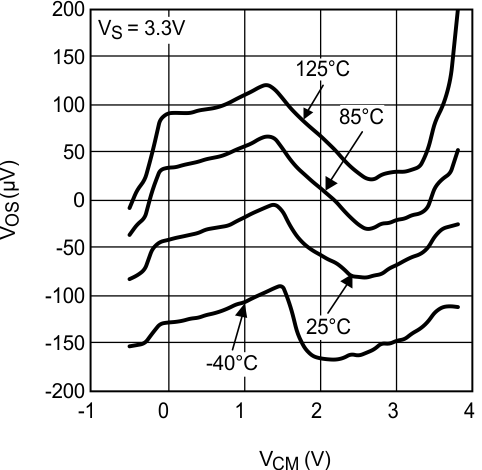 Figure 1. VOS vs VCM Over Temperature at 3.3 V
Figure 1. VOS vs VCM Over Temperature at 3.3 V
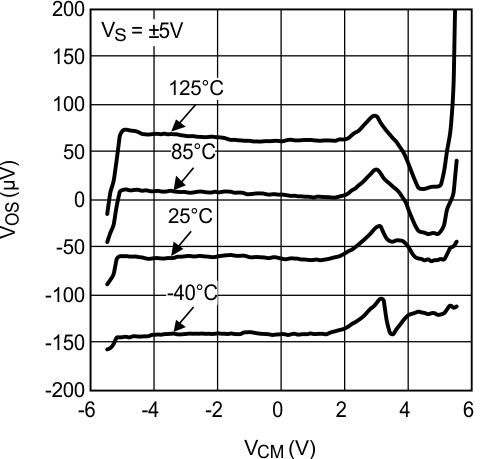 Figure 3. VOS vs VCM Over Temperature at ±5 V
Figure 3. VOS vs VCM Over Temperature at ±5 V
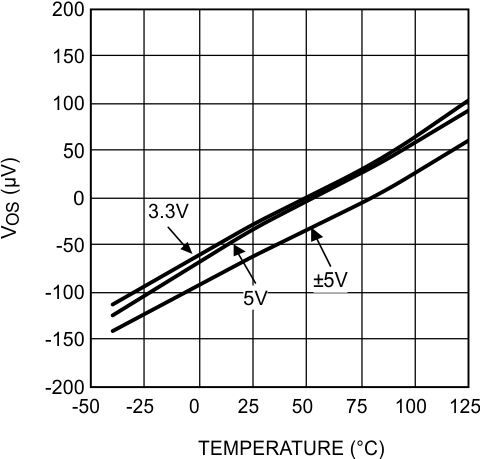 Figure 5. VOS vs Temperature
Figure 5. VOS vs Temperature
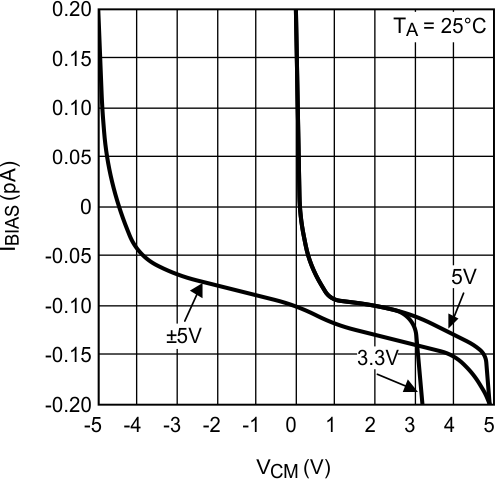 Figure 7. Input Bias Current vs VCM
Figure 7. Input Bias Current vs VCM
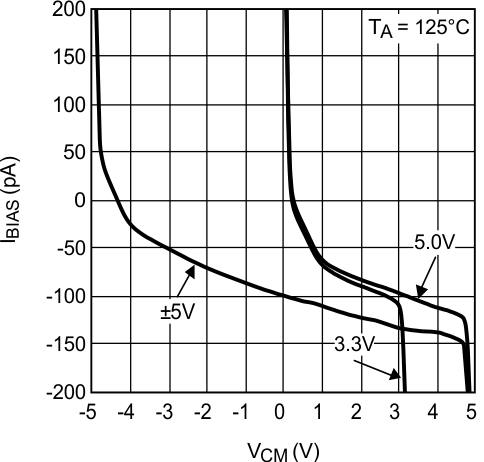 Figure 9. Input Bias Current vs VCM
Figure 9. Input Bias Current vs VCM
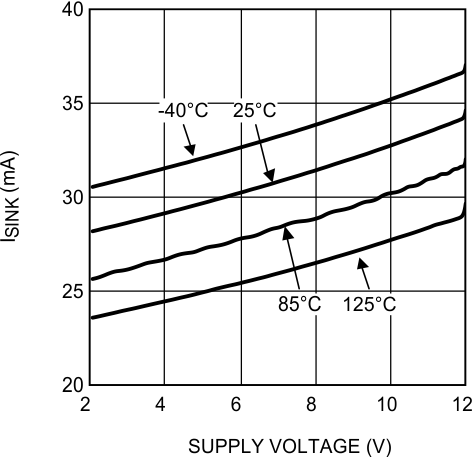 Figure 11. Sinking Current vs Supply Voltage
Figure 11. Sinking Current vs Supply Voltage
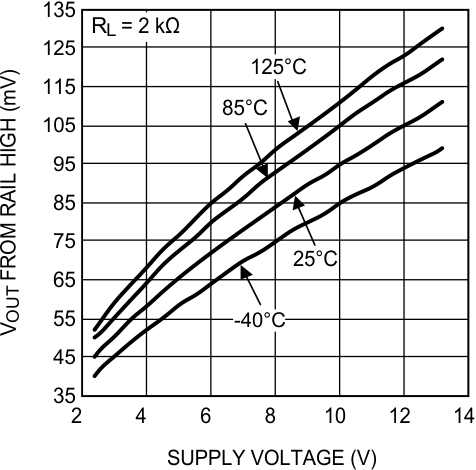 Figure 13. Output Swing High vs Supply Voltage RL = 2 kΩ
Figure 13. Output Swing High vs Supply Voltage RL = 2 kΩ
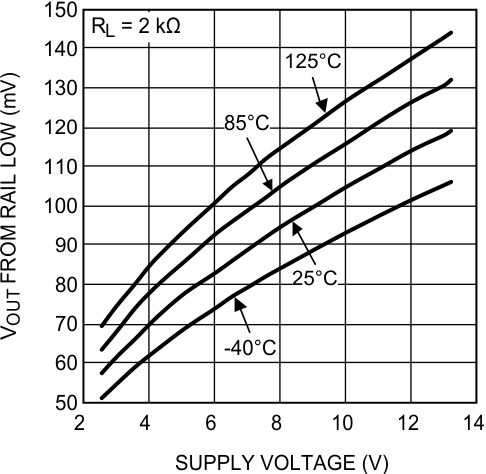 Figure 15. Output Swing Low vs Supply Voltage RL = 2 kΩ
Figure 15. Output Swing Low vs Supply Voltage RL = 2 kΩ
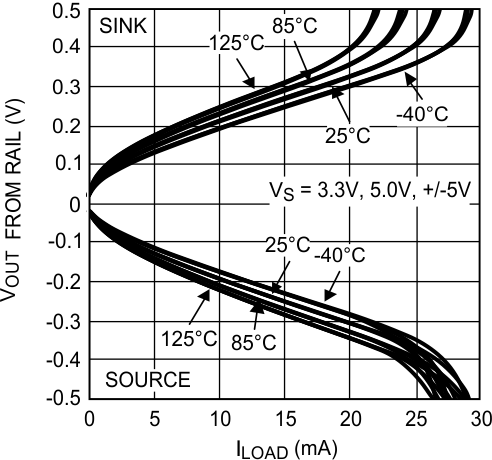 Figure 17. Output Voltage Swing vs Load Current
Figure 17. Output Voltage Swing vs Load Current
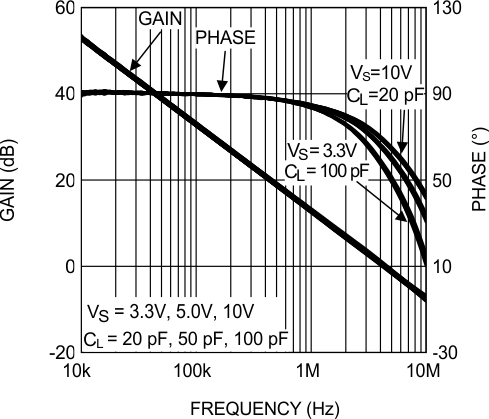 Figure 19. Open-Loop Frequency Response Over Load Conditions
Figure 19. Open-Loop Frequency Response Over Load Conditions
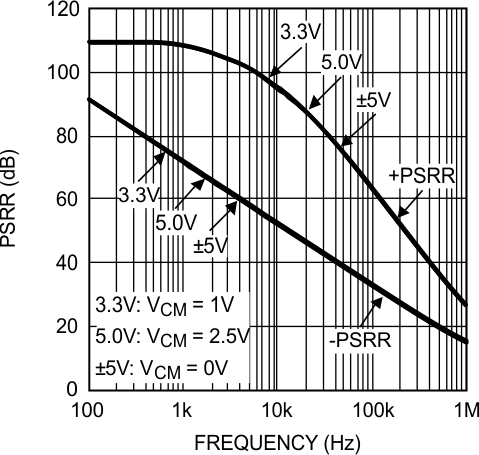 Figure 21. PSRR vs Frequency
Figure 21. PSRR vs Frequency
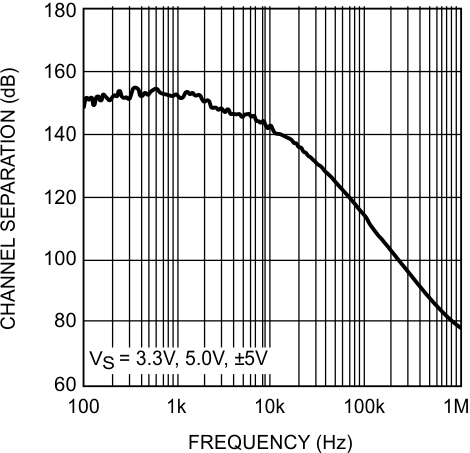 Figure 23. Channel Separation vs Frequency
Figure 23. Channel Separation vs Frequency
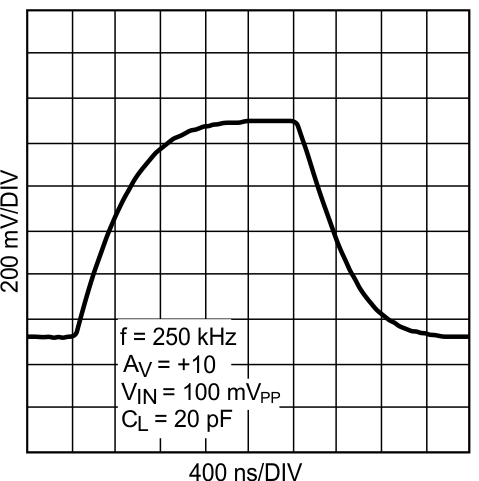 Figure 25. Large Signal Step Response With Gain = 10
Figure 25. Large Signal Step Response With Gain = 10
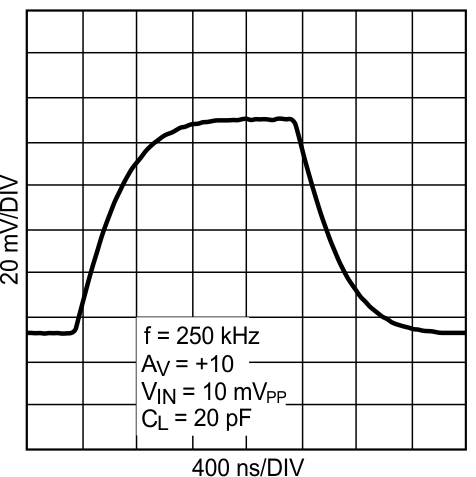 Figure 27. Small Signal Step Response With Gain = 10
Figure 27. Small Signal Step Response With Gain = 10
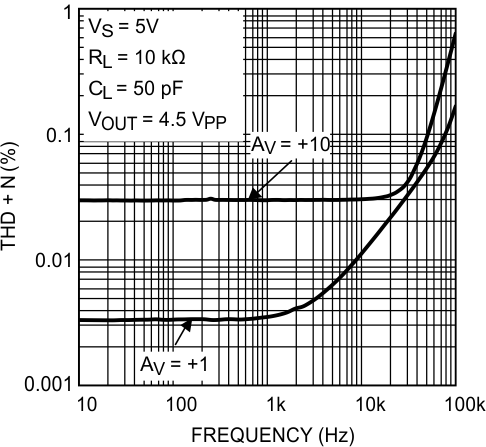 Figure 31. THD+N vs Frequency
Figure 31. THD+N vs Frequency
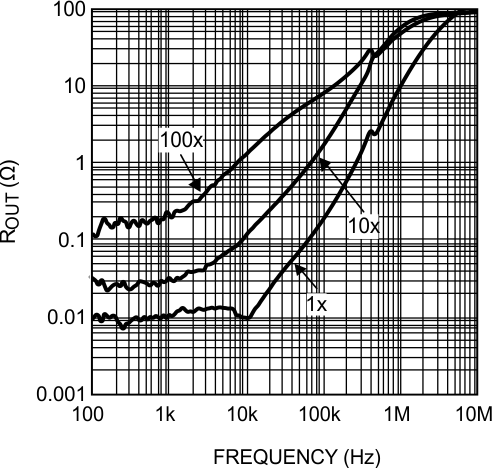 Figure 33. Closed-Loop Output Impedance vs Frequency
Figure 33. Closed-Loop Output Impedance vs Frequency
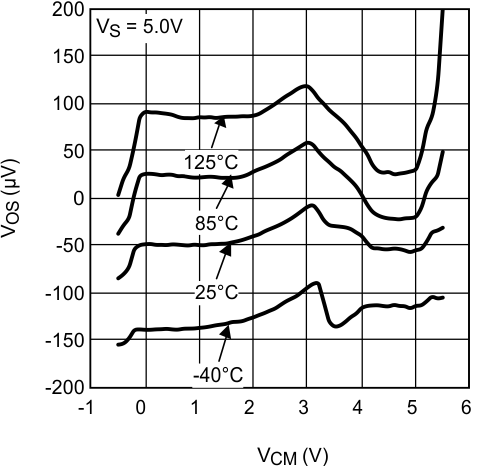 Figure 2. VOS vs VCM Over Temperature at 5 V
Figure 2. VOS vs VCM Over Temperature at 5 V
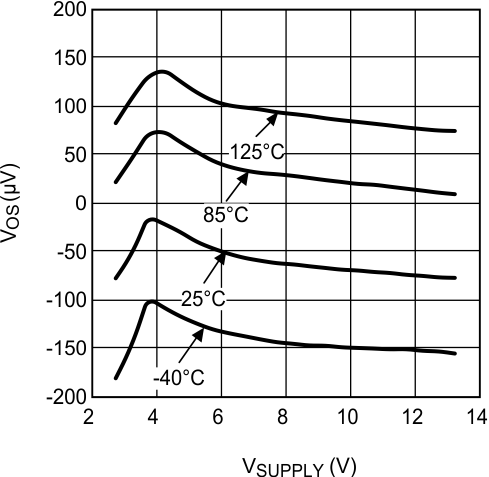 Figure 4. VOS vs Supply Voltage
Figure 4. VOS vs Supply Voltage
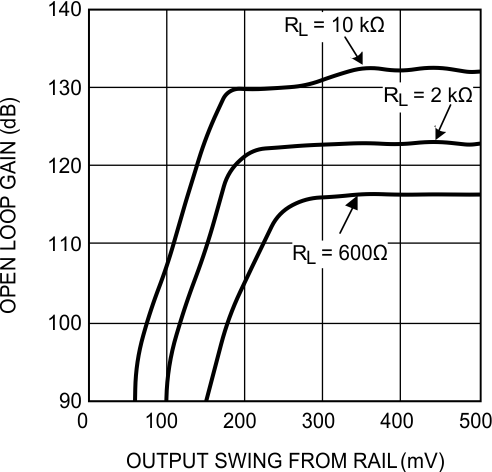 Figure 6. DC Gain vs VOUT
Figure 6. DC Gain vs VOUT
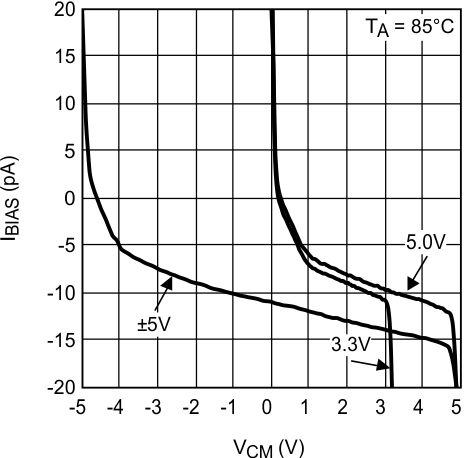 Figure 8. Input Bias Current vs VCM
Figure 8. Input Bias Current vs VCM
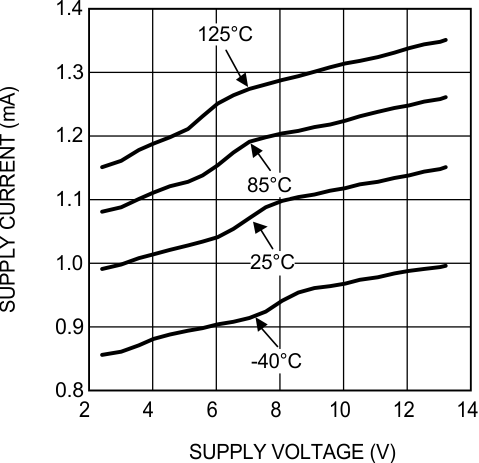 Figure 10. Supply Current Per Channel vs Supply Voltage
Figure 10. Supply Current Per Channel vs Supply Voltage
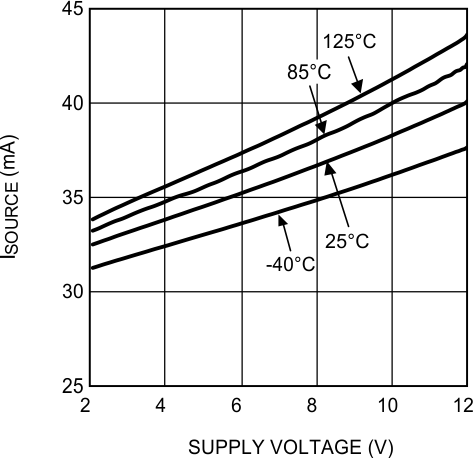 Figure 12. Sourcing Current vs Supply Voltage
Figure 12. Sourcing Current vs Supply Voltage
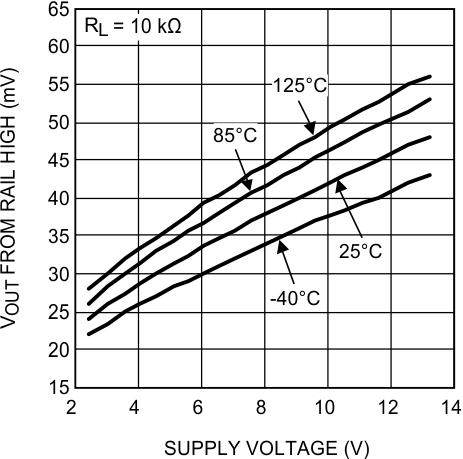 Figure 14. Output Swing High vs Supply Voltage RL = 10 kΩ
Figure 14. Output Swing High vs Supply Voltage RL = 10 kΩ
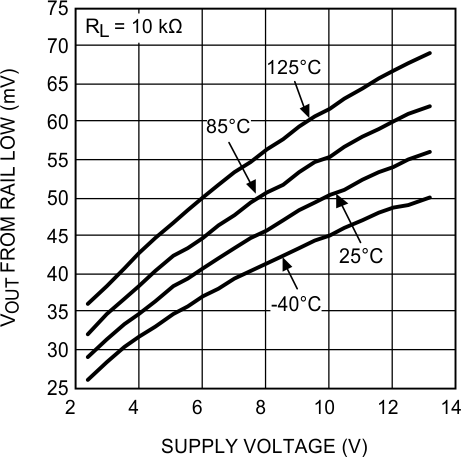 Figure 16. Output Swing Low vs Supply Voltage RL = 10 kΩ
Figure 16. Output Swing Low vs Supply Voltage RL = 10 kΩ
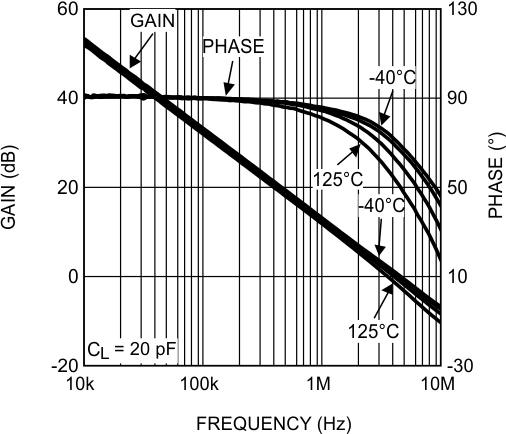 Figure 18. Open-Loop Frequency Response Over Temperature
Figure 18. Open-Loop Frequency Response Over Temperature
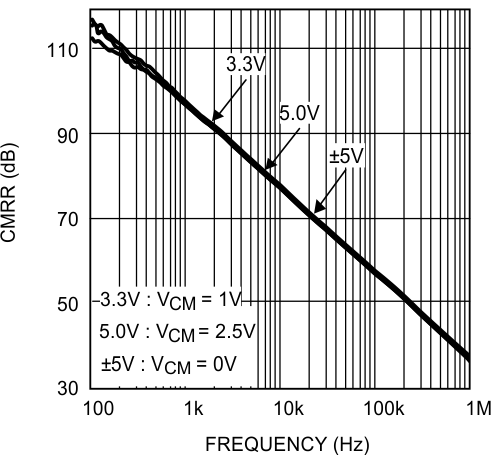 Figure 22. CMRR vs Frequency
Figure 22. CMRR vs Frequency
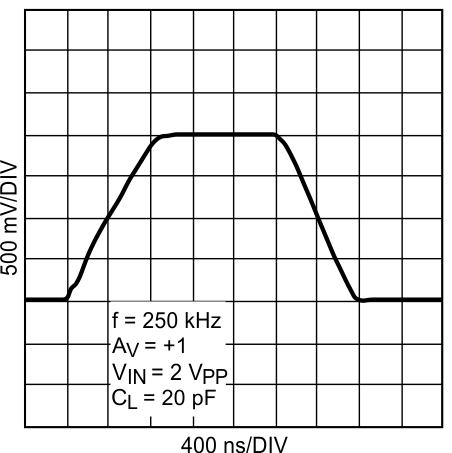 Figure 24. Large Signal Step Response With Gain = 1
Figure 24. Large Signal Step Response With Gain = 1
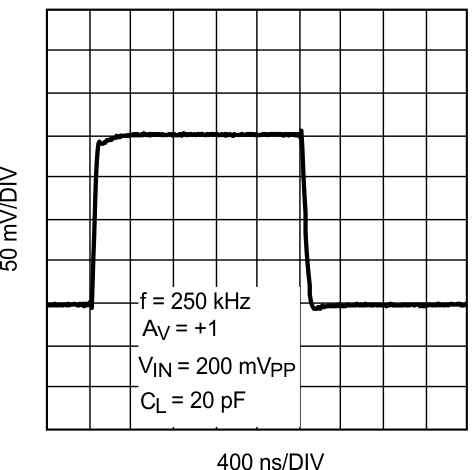 Figure 26. Small Signal Step Response With Gain = 1
Figure 26. Small Signal Step Response With Gain = 1
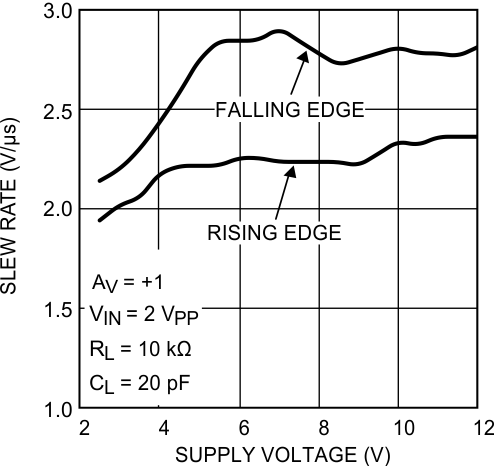 Figure 28. Slew Rate vs Supply Voltage
Figure 28. Slew Rate vs Supply Voltage
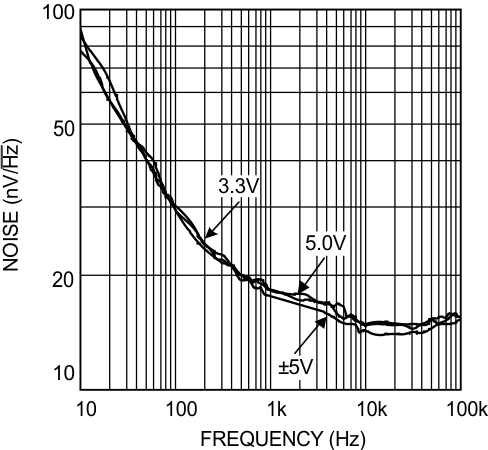 Figure 30. Input Voltage Noise vs Frequency
Figure 30. Input Voltage Noise vs Frequency
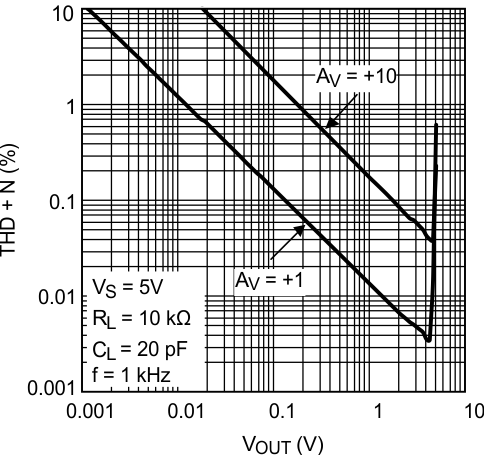 Figure 32. THD+N vs VOUT
Figure 32. THD+N vs VOUT
7 Detailed Description
7.1 Overview
The LMV84x devices are operational amplifiers with near-precision specifications: low noise, low temperature drift, low offset, and rail-to-rail input and output. Possible application areas include instrumentation, medical, test equipment, audio, and automotive applications.
Its low supply current of 1 mA per amplifier, temperature range of −40°C to +125°C, 12-V supply with CMOS input, and the small SC70 package for the LMV841 make the LMV84x a unique op amp family and a perfect choice for portable electronics.
7.2 Functional Block Diagram
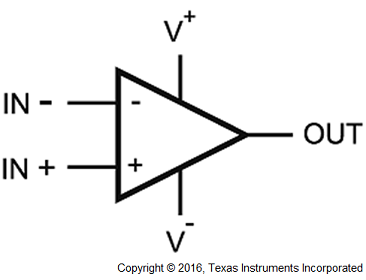
7.3 Feature Description
7.3.1 Input Protection
The LMV84x devices have a set of anti-parallel diodes D1 and D2 between the input pins, as shown in Figure 34. These diodes are present to protect the input stage of the amplifier. At the same time, they limit the amount of differential input voltage that is allowed on the input pins.
A differential signal larger than one diode voltage drop can damage the diodes. The differential signal between the inputs needs to be limited to ±300 mV or the input current needs to be limited to ±10 mA.
NOTE
When the op amp is slewing, a differential input voltage exists that forward-biases the protection diodes. This may result in current being drawn from the signal source. While this current is already limited by the internal resistors R1 and R2 (both 130 Ω), a resistor of 1 kΩ can be placed in the feedback path, or a 500-Ω resistor can be placed in series with the input signal for further limitation.
 Figure 34. Protection Diodes Between the Input Pins
Figure 34. Protection Diodes Between the Input Pins
7.3.2 Input Stage
The input stage of this amplifier consists of both a PMOS and an NMOS input pair to achieve a rail-to-rail input range. For input voltages close to the negative rail, only the PMOS pair is active. Close to the positive rail, only the NMOS pair is active. In a transition region that extends from approximately 2 V below V+ to 1 V below V+, both pairs are active, and one pair gradually takes over from the other. In this transition region, the input-referred offset voltage changes from the offset voltage associated with the PMOS pair to that of the NMOS pair. The input pairs are trimmed independently to ensure an input offset voltage of less then 0.5 mV at room temperature over the complete rail-to-rail input range. This also significantly improves the CMRR of the amplifier in the transition region.
NOTE
The CMRR and PSRR limits in the tables are large-signal numbers that express the maximum variation of the input offset of the amplifier over the full common-mode voltage and supply voltage range, respectively. When the common-mode input voltage of the amplifier is within the transition region, the small signal CMRR and PSRR may be slightly lower than the large signal limits.
7.4 Device Functional Modes
7.4.1 Driving Capacitive Load
The LMV84x can be connected as noninverting unity gain amplifiers. This configuration is the most sensitive to capacitive loading. The combination of a capacitive load placed on the output of an amplifier along with the output impedance of the amplifier creates a phase lag, which reduces the phase margin of the amplifier. If the phase margin is significantly reduced, the response is under-damped, which causes peaking in the transfer. When there is too much peaking, the op amp might start oscillating.
The LMV84x can directly drive capacitive loads up to 100 pF without any stability issues. To drive heavier capacitive loads, an isolation resistor (RISO) must be used, as shown in Figure 35. By using this isolation resistor, the capacitive load is isolated from the output of the amplifier, and hence, the pole caused by CL is no longer in the feedback loop. The larger the value of RISO, the more stable the output voltage is. If values of RISO are sufficiently large, the feedback loop is stable, independent of the value of CL. However, larger values of RISO result in reduced output swing and reduced output current drive.
 Figure 35. Isolating Capacitive Load
Figure 35. Isolating Capacitive Load
7.4.2 Noise Performance
The LMV84x devices have good noise specifications and are frequently used in low-noise applications. Therefore it is important to determine the noise of the total circuit. Besides the input-referred noise of the op amp, the feedback resistors may have an important contribution to the total noise.
For applications with a voltage input configuration, in general it is beneficial general, beneficial to keep the resistor values low. In these configurations high resistor values mean high noise levels. However, using low resistor values will increase the power consumption of the application. This is not always acceptable for portable applications, so there is a trade-off between noise level and power consumption.
Besides the noise contribution of the signal source, three types of noise need to be taken into account for calculating the noise performance of an op amp circuit:
- Input-referred voltage noise of the op amp
- Input-referred current noise of the op amp
- Noise sources of the resistors in the feedback network, configuring the op amp
To calculate the noise voltage at the output of the op amp, the first step is to determine a total equivalent noise source. This requires the transformation of all noise sources to the same reference node. A convenient choice for this node is the input of the op amp circuit. The next step is to add all the noise sources. The final step is to multiply the total equivalent input voltage noise with the gain of the op amp configuration.
If the input-referred voltage noise of the op amp is already placed at the input, the user can use the input-referred voltage noise without further transferring. The input-referred current noise needs to be converted to an input-referred voltage noise. The current noise is negligibly small, as long as the equivalent resistance is not unrealistically large, so the user can leave the current noise out for these examples. That leaves the user with the noise sources of the resistors, being the thermal noise voltage. The influence of the resistors on the total noise can be seen in the following examples, one with high resistor values and one with low resistor values. Both examples describe an op amp configuration with a gain of 101 which gives the circuit a bandwidth of 44.5 kHz. The op amp noise is the same for both cases, that is, an input-referred noise voltage of 20 nV/ and a negligibly small input-referred noise current.
and a negligibly small input-referred noise current.
 Figure 36. Noise Circuit
Figure 36. Noise Circuit
To calculate the noise of the resistors in the feedback network, the equivalent input-referred noise resistance is needed. For the example in Figure 36, this equivalent resistance Req can be calculated using Equation 1:

The voltage noise of the equivalent resistance can be calculated using Equation 2:

where
- enr = thermal noise voltage of the equivalent resistor
- Req (V/
 )
) - k = Boltzmann constant (1.38 x 10–23 J/K)
- T = absolute temperature (K)
- Req = resistance (Ω)
The total equivalent input voltage noise is given by Equation 3:

where
- en in = total input equivalent voltage noise of the circuit
- env = input voltage noise of the op amp
The final step is multiplying the total input voltage noise by the noise gain using Equation 4, which is in this case the gain of the op amp configuration:

The equivalent resistance for the first example with a resistor RF of 10 MΩ and a resistor RG of 100 kΩ at 25°C (298 K) equals Equation 5:

Now the noise of the resistors can be calculated using Equation 6, yielding:

The total noise at the input of the op amp is calculated in Equation 7:

For the first example, this input noise, multiplied with the noise gain, in Equation 8 gives a total output noise of:

In the second example, with a resistor RF of 10 kΩ and a resistor RG of 100 Ω at 25°C (298 K), the equivalent resistance equals Equation 9:

The resistor noise for the second example is calculated in Equation 10:

The total noise at the input of the op amp is calculated in Equation 10:

For the second example the input noise, multiplied with the noise gain, in Equation 12 gives an output noise of:

In the first example the noise is dominated by the resistor noise due to the very high resistor values, in the second example the very low resistor values add only a negligible contribution to the noise and now the dominating factor is the op amp itself. When selecting the resistor values, it is important to choose values that do not add extra noise to the application. Choosing values above 100 kΩ may increase the noise too much. Low values keep the noise within acceptable levels; choosing very low values however, does not make the noise even lower, but can increase the current of the circuit.
7.5 Interfacing to High Impedance Sensor
With CMOS inputs, the LMV84x are particularly suited to be used as high impedance sensor interfaces.
Many sensors have high source impedances that may range up to 10 MΩ. The input bias current of an amplifier loads the output of the sensor, and thus cause a voltage drop across the source resistance, as shown in Figure 37. When an op amp is selected with a relatively high input bias current, this error may be unacceptable.
The low input current of the LMV84x significantly reduces such errors. The following examples show the difference between a standard op amp input and the CMOS input of the LMV84x.
The voltage at the input of the op amp can be calculated with Equation 13:
For a standard op amp, the input bias Ib can be 10 nA. When the sensor generates a signal of 1 V (VS) and the sensors impedance is 10 MΩ (RS), the signal at the op amp input is calculated in Equation 14:
For the CMOS input of the LMV84x, which has an input bias current of only 0.3 pA, this would give Equation 15:
The conclusion is that a standard op amp, with its high input bias current input, is not a good choice for use in impedance sensor applications. The LMV84x devices, in contrast, are much more suitable due to the low input bias current. The error is negligibly small; therefore, the LMV84x are a must for use with high-impedance sensors.
 Figure 37. High Impedance Sensor Interface
Figure 37. High Impedance Sensor Interface
